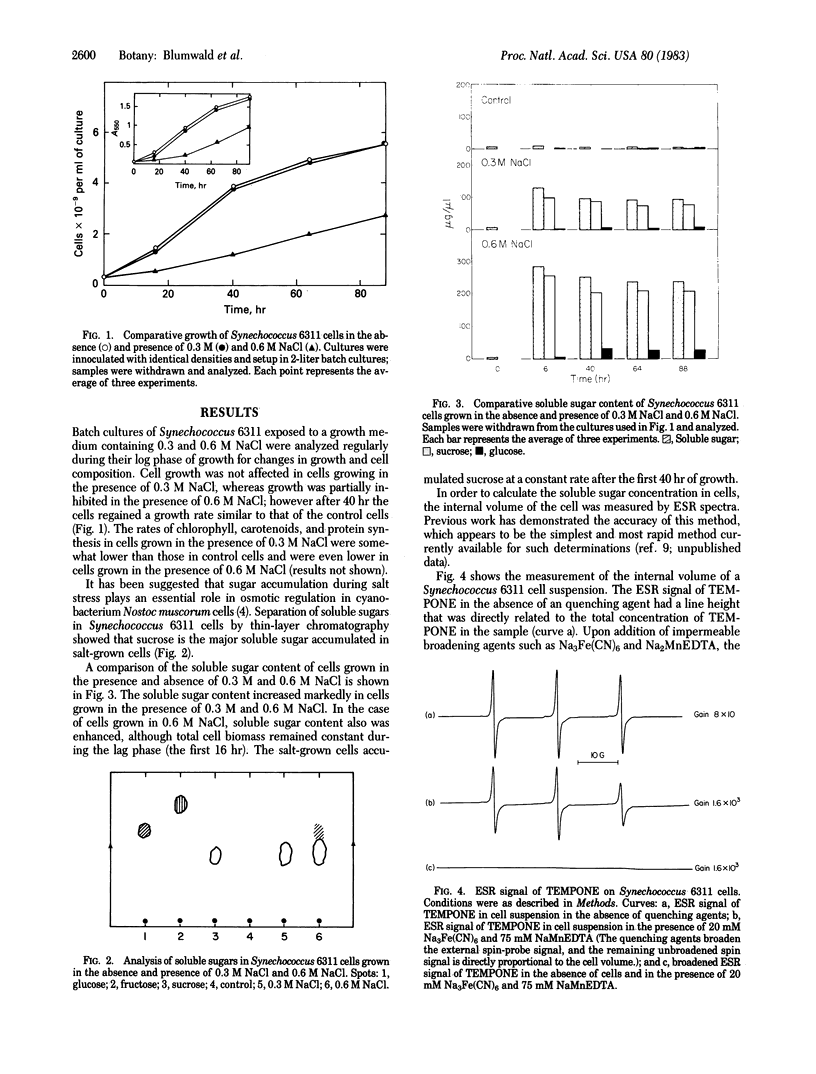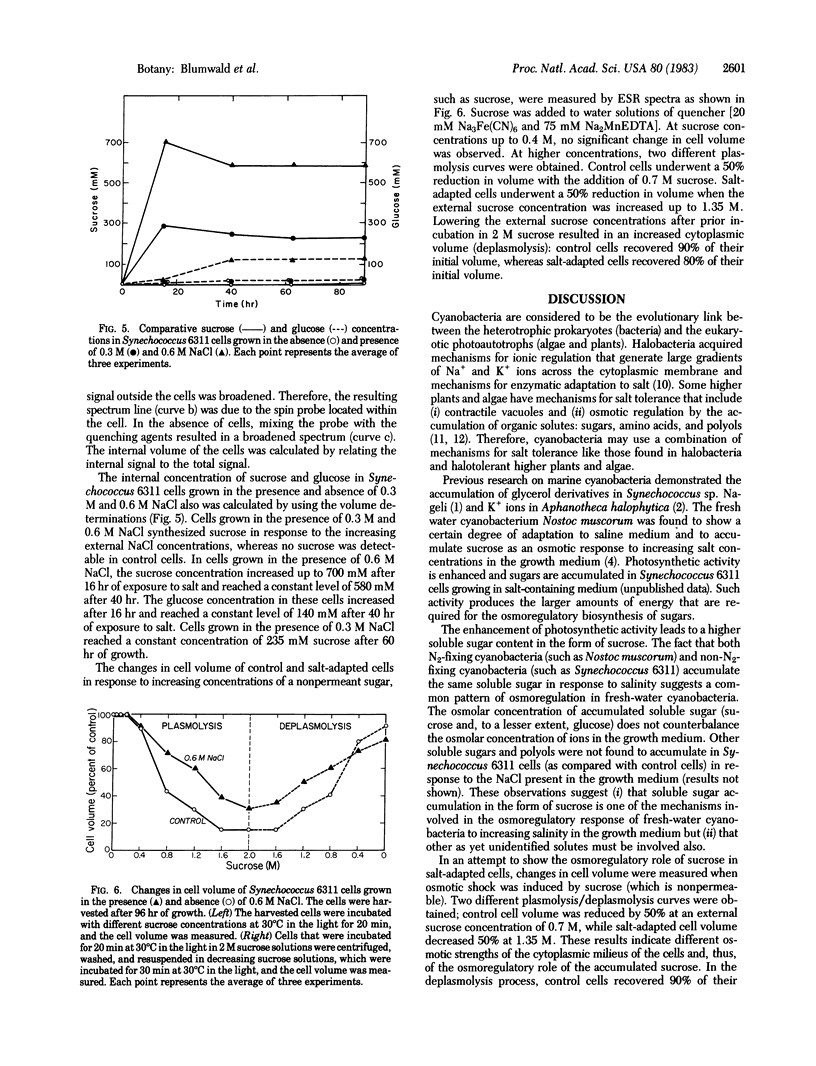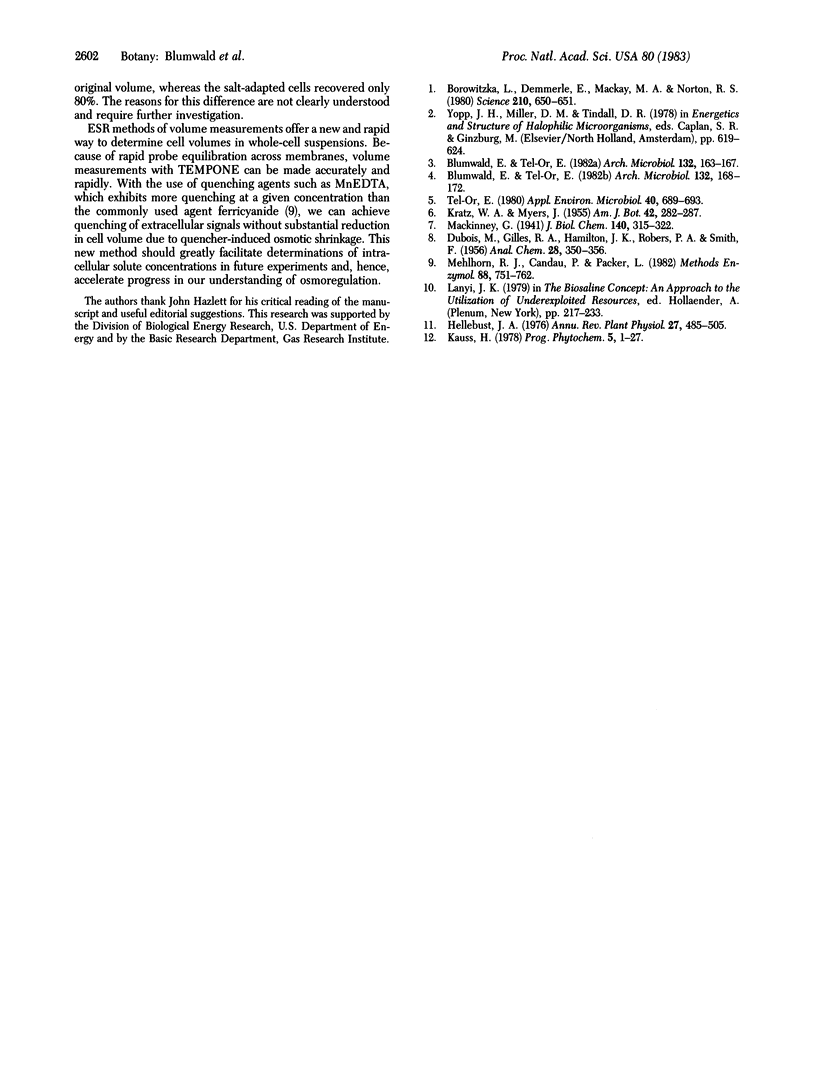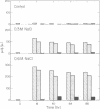Abstract
Sucrose is accumulated in response to NaCl-induced stress in the cyanobacterium Synechococcus 6311. Internal cell volume was measured by ESR spectra with 2,2,6,6-tetramethyl-4-oxopiperidinoxy free radical (TEMPONE) as a spin probe in order to calculate sucrose concentrations inside the cell. This method is rapid and reliable and provides an unambiguous measurement of absolute volumes in different osmotic environments. Because the osmolar concentration of sucrose does not counter-balance the osmolar concentrations of ions in the growth medium, we suggest that sucrose accumulation is one of the mechanisms involved in the process of adaptation to salt of Synechococcus 6311. The accumulation of sucrose in non-N2-fixing cyanobacteria such as Synechococcus 6311 and in N2-fixing cyanobacteria such as Nostoc muscorum suggests a common mechanism of osmoregulation of fresh water cyanobacteria in response to increasing NaCl concentrations in the growth medium.
Keywords: spin labeling, cell volume, blue-green algae, salt tolerance
Full text
PDF



Images in this article
Selected References
These references are in PubMed. This may not be the complete list of references from this article.
- Borowitzka L. J., Demmerle S., Mackay M. A., Norton R. S. Carbon-13 nuclear magnetic resonance study of osmoregulation in a blue-green alga. Science. 1980 Nov 7;210(4470):650–651. doi: 10.1126/science.210.4470.650. [DOI] [PubMed] [Google Scholar]
- Tel-Or E. Response of n(2)-fixing cyanobacteria to salt. Appl Environ Microbiol. 1980 Oct;40(4):689–693. doi: 10.1128/aem.40.4.689-693.1980. [DOI] [PMC free article] [PubMed] [Google Scholar]



